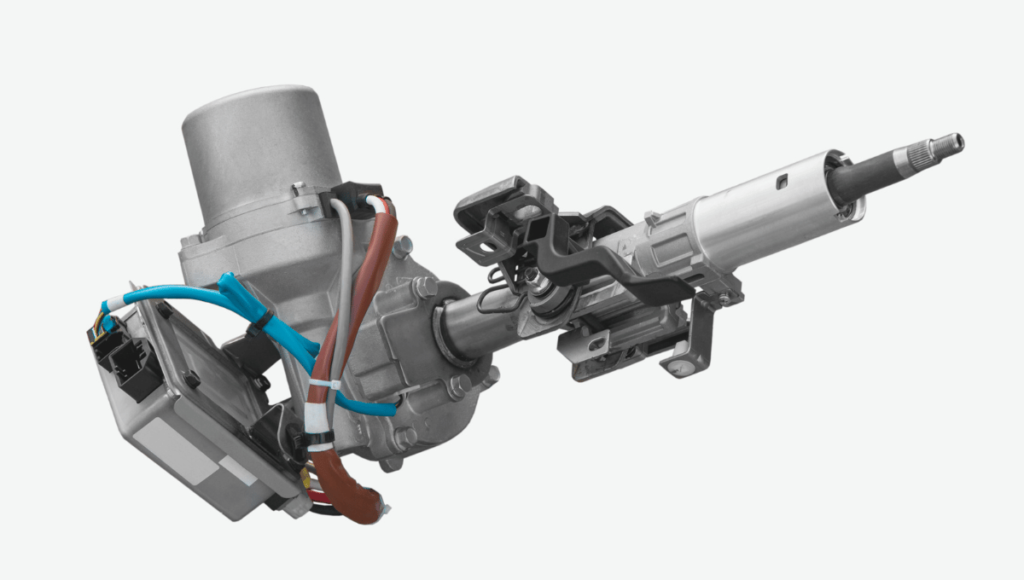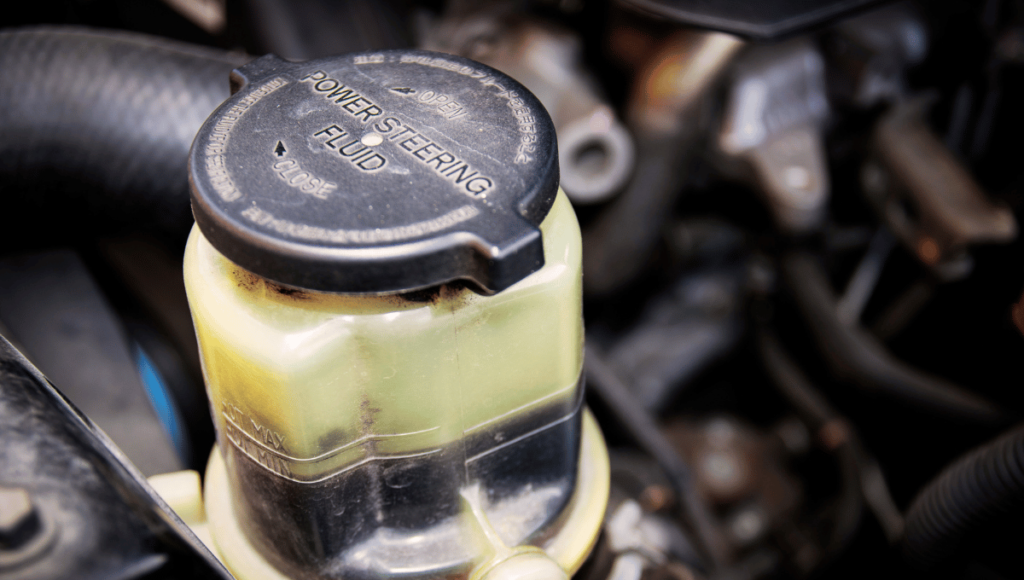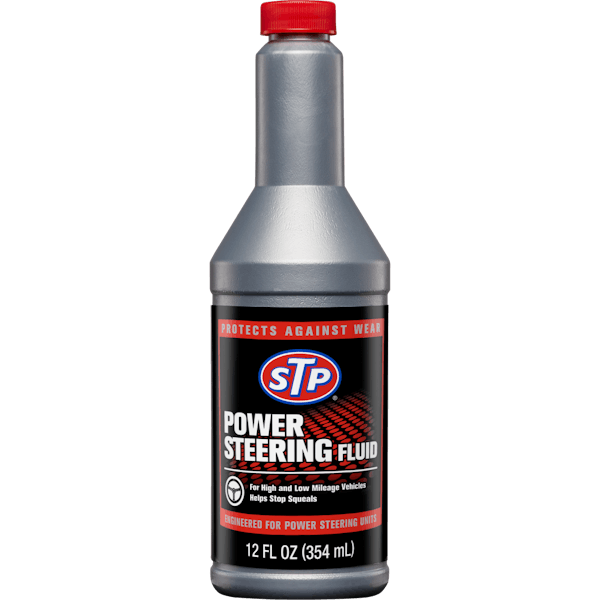What is Power Steering Fluids and How Does it Work?
Power steering helps drivers steer vehicles easily by using hydraulic or electric actuators. It reduces the physical effort required to turn the steering wheel.
The technology has revolutionized driving comfort and safety. It uses hydraulic or electric systems to amplify the force applied to the steering wheel. This makes it easier to maneuver vehicles, especially at low speeds or during parking. Modern cars often come with electric power steering, which is more efficient and requires less maintenance.
Hydraulic systems, on the other hand, are commonly found in older models and heavy-duty vehicles. It enhances vehicle control, reducing driver fatigue and improving overall driving experience. It’s an indispensable feature in today’s automotive world, offering both convenience and safety.

Credit: www.progressive.com
What Is Power Steering?
Power steering assists drivers in turning the steering wheel with minimal effort. It enhances driving comfort and vehicle control. This system uses hydraulic or electric actuators to make steering easier, especially at low speeds.
It is a game-changer in the automotive world. It has revolutionized how drivers handle their vehicles. But what exactly is power steering? Let’s dive into the specifics.
How Power Steering Works
Understanding the mechanics behind power steering is fascinating. Here are the key components and their roles:
- Hydraulic pump: Generates pressure using fluid.
- Steering gear: Converts hydraulic pressure into mechanical force.
- Fluid reservoir: Stores the hydraulic fluid.
- Steering rack: Transfers force to the wheels.
Types Of Power Steering
There are different types of power steering systems. Each has its unique features and benefits:
- Hydraulic Power Steering (HPS): Uses hydraulic fluid to assist steering.
- Electric Power Steering (EPS): Uses an electric motor for assistance.
- Electro-Hydraulic Power Steering (EHPS): Combines hydraulic and electric systems.
Benefits Of Power Steering
It brings multiple advantages to drivers. Here’s why it’s an essential feature:
- Easier Maneuverability: Reduces effort needed to steer.
- Enhanced Safety: Improves control, especially at low speeds.
- Better Precision: Offers smoother and more accurate steering.
It can help you appreciate its importance in modern vehicles. From making driving easier to enhancing safety, it plays a crucial role in your driving experience.
How Power Steering Works?
It uses hydraulic or electric actuators to assist in turning the steering wheel, reducing driver effort. Sensors detect the steering input and provide the necessary assistance, ensuring smooth and precise control. This system enhances driving comfort and vehicle maneuverability.

It has revolutionized the driving experience. It allows drivers to steer with minimal effort, enhancing comfort and control. Understanding how power steering works can help you appreciate this crucial system in modern vehicles.
Hydraulic Power Steering
It is the most common type. Here’s how it operates:
- Pump: Driven by the engine, this pump generates hydraulic pressure.
- Fluid: Special power steering fluid transmits the pressure.
- Rack and Pinion: This mechanism converts hydraulic pressure into steering force.
- Valves: Control the flow of fluid to assist with steering.
Electric Power Steering
It is increasingly popular. It relies on an electric motor rather than hydraulics.
- Electric Motor: Assists the steering mechanism directly.
- Sensors: Detect the driver’s input and adjust the assistance.
- Control Unit: Manages the motor based on sensor data.
- Battery: Powers the electric motor, reducing engine load.
Hybrid Power Steering
Hybrid systems combine hydraulic and electric components for optimized performance.
- Hydraulic Pump: Still present but powered by an electric motor.
- Reduced Energy: The electric motor reduces the engine’s workload.
- Advanced Control: Offers better precision and variable assistance levels.
- Reliability: Combines the strengths of both systems.
Power Steering Maintenance
Regular maintenance keeps your steering system in top shape.
- Fluid Check: Ensure fluid levels are adequate.
- Belt Inspection: Check the condition of belts driving the pump.
- Leak Detection: Look for any signs of fluid leakage.
- System Flushing: Periodically flush the system to remove contaminants.
It makes your driving experience smoother and safer. Understanding its workings can help you maintain your vehicle better.
Electric Power Steering Vs. Hydraulic Power Steering
It offers improved fuel efficiency and precise control, while hydraulic power steering provides a traditional, robust feel. Both systems enhance driving comfort and safety, yet they differ in maintenance and performance characteristics.
The debate between electric power steering (EPS) and hydraulic power steering (HPS) is a hot topic among car enthusiasts and professionals alike. Both systems have their unique advantages and challenges. Understanding these differences can help you make an informed decision.
How Electric Power Steering Works
It uses an electric motor to assist the driver. This system is modern and efficient.
- Electric Motor: Provides the necessary power to assist the steering.
- Sensors: Detect the driver’s steering input and adjust accordingly.
- Control Unit: Manages the motor’s power delivery to ensure smooth steering.
Benefits Of Electric Power Steering
EPS offers several advantages that make it a popular choice for many vehicles.
- Fuel Efficiency: Reduces the load on the engine, improving fuel economy.
- Low Maintenance: Fewer moving parts result in less wear and tear.
- Customizable: Can be easily adjusted to suit different driving conditions.
How Hydraulic Power Steering Works
Hydraulic steering operates using hydraulic fluid. It’s a traditional system that many still prefer.
The system involves a hydraulic pump powered by the engine. This pump circulates fluid to create pressure, assisting the driver in steering.
Benefits Of Hydraulic Power Steering
Hydraulic steering has its own set of benefits. These make it a reliable option for many drivers.
- Robust Performance: Offers a strong and consistent steering feel.
- Durability: Known for its long-lasting components.
- Ease of Repair: Parts are generally easier to find and replace.
Comparing Costs
The cost of installation and maintenance varies between EPS and HPS.
- EPS: Generally has higher upfront costs but lower long-term maintenance.
- HPS: Lower initial costs but requires more frequent maintenance.
Environmental Impact
Both systems have different effects on the environment.
EPS is more eco-friendly. It consumes less power and reduces emissions. HPS relies on hydraulic fluid, which can be harmful if leaked.
Driving Experience
The driving experience can vary significantly between EPS and HPS.
- EPS: Provides a lighter, more responsive steering feel.
- HPS: Offers a more tactile and connected driving experience.
Choosing between EPS and HPS depends on your priorities. Whether you value efficiency or a robust feel, understanding these systems can help you make the best choice for your driving needs.
Where Is Power Steering Fluid?
It’s fluid is typically found in the power steering pump reservoir under the hood of your vehicle. Refer to your vehicle’s manual for the exact location and proper fluid type.

It’s fluid is essential for smooth steering and vehicle control. Knowing where to locate and check this fluid can save you from potential issues and costly repairs.
Checking Under The Hood
When you pop the hood, the location of the fluid reservoir can vary:
- Driver’s Side: Often found near the driver’s side of the engine bay.
- Passenger’s Side: Sometimes located on the passenger’s side.
- Labeled Cap: Look for a cap labeled “Power Steering” or an icon of a steering wheel.
Identifying The Reservoir
The reservoir is typically a small, translucent container:
- Size and Shape: Usually cylindrical or rectangular.
- Fluid Level Markings: Lines indicating “Min” and “Max” levels.
- Color of Fluid: Should be red, amber, or clear.
How To Check Fluid Levels
To ensure your fluid level is optimal, follow these steps:
- Warm Up the Engine: Run the engine for a few minutes.
- Turn Off the Engine: Ensure safety by shutting off the engine.
- Locate the Reservoir: Find the power steering fluid reservoir.
- Check the Level: Compare the fluid level with the marked lines.
Signs Of Low Power Steering Fluid
Certain signs indicate low fluid levels:
- Difficulty Steering: Harder to turn the steering wheel.
- Unusual Noises: Whining or groaning sounds when turning.
- Leaks: Fluid spots under your vehicle.
Adding Power Steering Fluid
If your fluid is low, here’s what to do:
- Choose the Right Fluid: Refer to your vehicle’s manual for the correct type.
- Pour Slowly: Add fluid gradually to avoid overfilling.
- Recheck the Level: Ensure it’s within the “Min” and “Max” lines.
Frequency Of Checking Fluid Levels
Regular checks can prevent issues:
- Monthly Checks: Inspect fluid levels monthly.
- During Oil Changes: Check during routine maintenance.
- If Issues Arise: Inspect immediately if you notice steering problems.
Importance Of Regular Maintenance
Maintaining proper fluid levels ensures:
- Smooth Steering: Easier and more responsive steering.
- Prolonged System Life: Extends the life of your power steering components.
- Safety: Reduces the risk of steering failure.
By understanding where to find and how to check your steering fluid, you can keep your vehicle running smoothly and safely. Regular maintenance and timely checks are key to avoiding steering problems and ensuring a safe driving experience.
What Does Power Steering Fluid Do?
It’s fluid lubricates and powers the steering system, ensuring smooth and effortless wheel movement. It reduces friction and wear, enhancing vehicle control and safety.

It’s fluid is the lifeblood of any vehicle’s steering system. Without it, maneuvering your car would be a grueling task. This fluid ensures smooth steering and keeps the system running efficiently.
Lubricates Steering Components
It’s fluid lubricates the various components within the steering system. This ensures that all moving parts glide effortlessly against each other, reducing wear and tear. Proper lubrication is crucial for the longevity of the steering mechanism.
Transmits Hydraulic Force
The fluid transmits hydraulic force from the steering wheel to the steering mechanism. Here’s how it works:
- Pressure Generation: The fluid generates pressure within the system.
- Force Transmission: This pressure translates into force that helps in turning the wheels.
- Efficient Steering: Resulting in a more effortless and responsive steering experience.
Prevents Corrosion
Power steering’s fluid also acts as a barrier against corrosion. This is vital for the longevity of the system:
- Anti-Corrosive Properties: It contains additives that prevent rust and corrosion.
- System Protection: Protects metal components from degrading over time.
- Enhanced Durability: Ensures the steering system remains in top condition.
Temperature Regulation
The fluid helps regulate temperature within the power steering’s system. High heat can cause significant damage, so this is critical:
- Heat Dissipation: Helps dissipate heat generated during operation.
- Prevents Overheating: Keeps the system from getting too hot.
- Maintains Viscosity: Ensures the fluid remains effective even under high temperatures.
Seals And Leak Prevention
Maintaining the integrity of seals and preventing leaks is another role of power steering fluid. This helps in:
- Seal Conditioning: Keeps seals soft and pliable.
- Leak Prevention: Minimizes the risk of fluid leaks.
- System Efficiency: Ensures the system operates without fluid loss.
Types Of Power Steering Fluids
Power steering’s fluids come in various types, including mineral-based, synthetic, and semi-synthetic. Each type offers unique benefits tailored to specific vehicle requirements. Proper selection ensures smooth and efficient steering performance.
It’s fluid is essential for the smooth operation of your vehicle’s steering system. Choosing the right type can make a significant difference in performance and longevity. Let’s dive into the various types available.
Mineral-based Power Steering Fluids
Mineral-based fluids are derived from petroleum. They are commonly used in older vehicles and offer good lubrication properties.
- Affordable option: Mineral-based fluids are generally cheaper than synthetic alternatives.
- Lubrication: These fluids provide excellent lubrication for metal components.
- Compatibility: Ideal for older vehicles with less advanced steering systems.
- Temperature sensitivity: More susceptible to temperature changes, affecting performance in extreme conditions.
Synthetic Power Steering Fluids
Synthetic fluids are engineered to deliver superior performance. They are often recommended for modern vehicles.
These fluids offer several advantages:
- High performance: Synthetic options excel in extreme temperatures.
- Long-lasting: They provide better longevity compared to mineral-based fluids.
- Enhanced protection: Superior protection against wear and tear.
- Stability: More stable under varying conditions, ensuring consistent performance.
Semi-synthetic Power Steering Fluids
Semi-synthetic fluids blend the best of both worlds. They combine properties of mineral and synthetic fluids.
These fluids are a balanced choice:
- Cost-effective: More affordable than full synthetic options.
- Better performance: Superior to mineral-based fluids but not as high-performing as full synthetic.
- Versatile: Suitable for a wide range of vehicles.
- Moderate stability: Offers decent stability and longevity.
Universal Power Steering Fluids
Universal fluids are designed to work with multiple types of steering systems. They are convenient for many car owners.
Here are the benefits:
- Compatibility: Can be used in various steering systems.
- Convenience: Simplifies fluid selection.
- Adequate performance: Provides satisfactory performance across different vehicle types.
- Availability: Easily found in most auto parts stores.
Hydraulic Power Steering Fluids
Hydraulic fluids are specifically formulated for hydraulic steering systems. They are vital for vehicles using hydraulic steering mechanisms.
These fluids have specific characteristics:
- Pressure handling: Excellent at managing high-pressure conditions.
- System protection: Protects hydraulic components from corrosion and wear.
- Consistency: Maintains performance across different temperatures.
- Specialized use: Best suited for vehicles with hydraulic steering systems.
Electro-hydraulic Power Steering Fluids
Electro-hydraulic fluids cater to hybrid steering systems. These systems use both electrical and hydraulic components.
These fluids offer unique benefits:
- Hybrid compatibility: Designed for electro-hydraulic systems.
- Precision: Ensures accurate steering responses.
- Durability: Provides long-lasting performance.
- Advanced protection: Protects both electrical and hydraulic components.
Choosing the right steering fluid is crucial for maintaining your vehicle’s steering performance. Each type has its own set of advantages, so select the one that best fits your vehicle’s needs.

Credit: www.linkedin.com
Conclusion
It enhances driving comfort and control. It reduces effort, making your driving experience smoother. Regular maintenance ensures long-lasting performance. Consider it for a safer, more enjoyable drive. Embrace the benefits and experience the difference today. Happy driving!

Specializes on car underchassis & power steering repair. We have experienced mechanic to attend all your underchassis & power steering repair needs.




